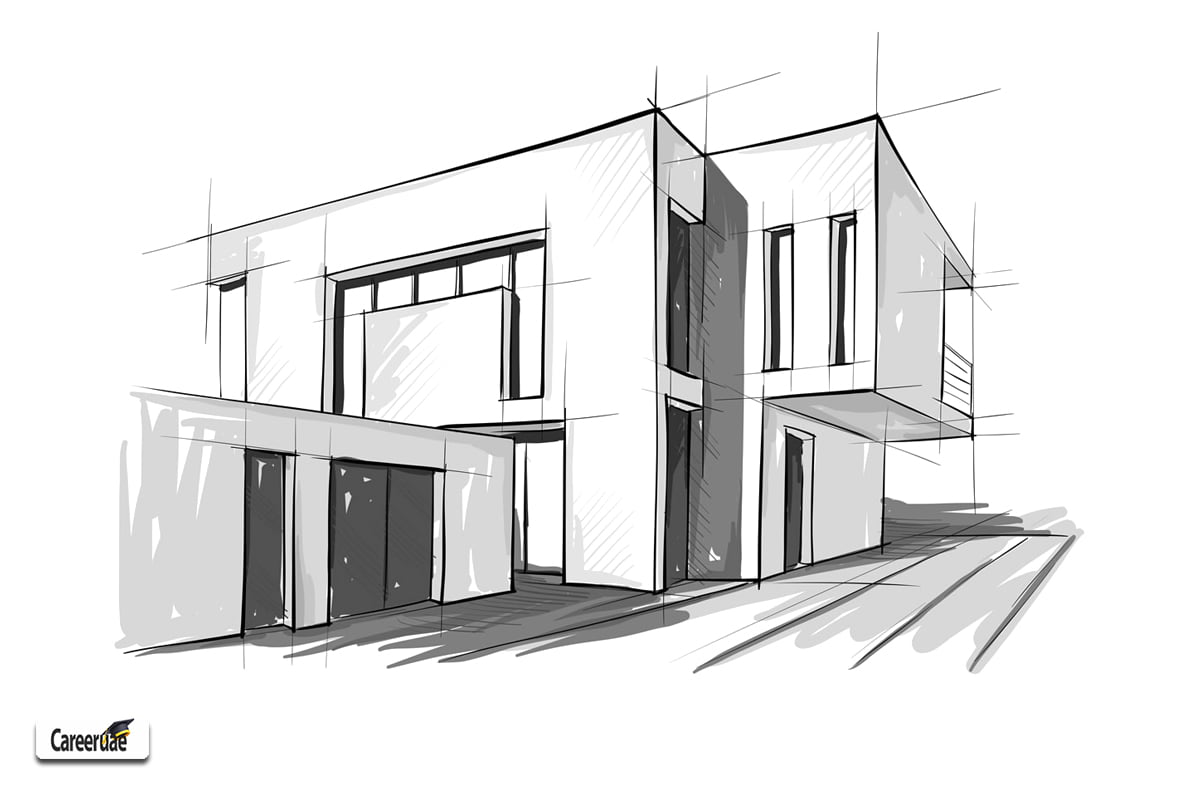Studying architecture in the USA costs around $25,000 to $70,000 per year. The cost varies depending on the university, program, and location.
Pursuing a degree in architecture requires a significant investment, but it is important to consider the potential career opportunities and the value of the education. With the high demand for skilled and innovative architects, a degree in architecture can lead to rewarding career prospects and financial stability.
It is advisable to research and compare the costs and offerings of different universities to find the best fit for your educational and financial needs.
Understanding Tuition Fees
Studying architecture in the USA involves tuition fees that can vary depending on the university or college. It is important to understand the costs involved to plan your budget effectively.
Studying architecture in the USA opens up vast opportunities for aspiring architects to gain knowledge and skills in this creative field. However, just like any educational pursuit, it is essential to have a good understanding of the tuition fees involved.
In this section, we will explore the average annual tuition fees for architecture programs in the USA and the factors that influence these costs.
Average Annual Tuition Fees For Architecture Programs In The USA:
- Public universities: On average, tuition fees for architecture programs at public universities in the USA range from $10,000 to $30,000 per year for in-state students. Out-of-state students may pay higher fees, usually ranging from $20,000 to $40,000 per year.
- Private universities: The tuition fees for architecture programs at private universities tend to be higher compared to public institutions. On average, students can expect to pay approximately $30,000 to $50,000 per year.
- Prestigious universities: Renowned architecture schools often have higher tuition fees due to their reputation and the quality of education they offer. The annual fees at these institutions may range from $40,000 to $70,000 or more.
- Additional expenses: It’s important to consider additional expenses beyond tuition fees, such as textbooks, supplies, studio fees, and accommodation. These costs can vary depending on the institution and location, so it’s crucial to plan accordingly.
Factors Influencing The Cost Of Studying Architecture:
- Location: Tuition fees can vary based on the geographical location of the university, with universities in major cities or high-cost areas generally charging higher fees.
- Program duration: The duration of the architecture program also plays a role in the overall cost. Bachelor’s degree programs typically span four to five years, while master’s degree programs can range from one to three years.
- University reputation: Highly renowned universities may have higher tuition fees due to their established reputation and resources.
- Facilities and resources: Architecture programs that provide state-of-the-art facilities, well-equipped studios, and access to specialized resources may have higher tuition fees.
- Scholarships and financial aid: Scholarships, grants, and financial aid options are available to help reduce the financial burden of studying architecture. These can significantly impact the overall cost, so it’s crucial to explore all available options.
Understanding the average annual tuition fees for architecture programs in the USA and the factors that influence these costs will help you plan your education accordingly. Remember to consider both the tuition fees and additional expenses to ensure you have a realistic understanding of the financial commitment involved.

Additional Expenses To Consider
To accurately budget for studying architecture in the USA, it’s important to consider additional expenses such as textbooks, architectural software, field trips, and studio supplies. These costs can add up and should be factored into your overall financial plan.
Living Costs And Accommodation Expenses:
- Rent for an apartment or dormitory: This expense can vary depending on the location and type of accommodation you choose. On average, you can expect to spend around $800 to $2,000 per month on rent.
- Utilities: These include electricity, water, internet, and gas. Budget around $100 to $200 per month for these expenses.
- Food and groceries: The cost of food can vary based on your eating habits and whether you eat out or cook at home. On average, students spend around $200 to $400 per month on groceries and dining out.
- Transportation: Depending on the city and its public transportation options, you might spend anywhere from $50 to $200 per month on commuting costs.
- Personal expenses: This category covers items like clothing, toiletries, entertainment, and miscellaneous expenses. Students typically spend around $100 to $200 per month on personal items.
Costs Of Textbooks, Supplies, And Materials:
- Textbooks: These can be quite expensive, especially for architecture students who require specialized publications. Budget around $1,000 to $1,500 per year for textbooks.
- Supplies and drafting materials: Architecture students often need to purchase drawing tools, drafting paper, and other supplies. These costs can vary but are generally around $200 to $400 per semester.
- Computer and software: Architecture students need powerful computers and specific software for their studies. Be prepared to spend around $1,500 to $2,000 on a computer and additional costs for software.
Professional Association Membership Fees:
- Joining professional associations is highly recommended for architecture students as it offers networking opportunities and access to resources. Some popular associations in the field include the american institute of architects (aia) and the national council of architectural registration boards (ncarb). Membership fees can range from $50 to $400 per year, depending on the association and student discounts available.
Remember, these are estimated costs and can vary based on your location and personal choices. It’s important to plan your finances wisely and factor in these additional expenses when considering the overall cost of studying architecture in the USA.
Scholarships, Grants, And Financial Aid
Studying architecture in the USA can be expensive, but there are scholarships, grants, and financial aid options available to help offset the costs. These resources can greatly assist students in pursuing their architectural education without taking on excessive financial burden.
Studying architecture in the USA can be an exciting and rewarding experience, but it’s essential to consider the financial aspects. Scholarships, grants, and financial aid can provide much-needed support to aspiring architecture students. In this section, we will explore the available scholarships and grants specifically tailored for architecture students, as well as various financial aid options and how to apply for them.
Available Scholarships And Grants For Architecture Students:
- American institute of architects (aia) diversity advancement scholarship: This scholarship aims to promote diversity in the field of architecture and is open to minority students pursuing a professional degree in architecture.
- Association of Collegiate Schools of Architecture (ACSA) scholarships: The ACSA offers a range of scholarships for undergraduate and graduate architecture students, including opportunities for design excellence, research, and sustainability.
- National society of professional engineers (nspe) scholarships: While not specific to architecture, the nspe offers scholarships to engineering students, including architectural engineering. This can be a valuable resource for students studying architectural engineering and related fields.
- Architectural research centers consortium (arcc) scholarships: Arcc provides scholarships for students engaged in research related to architecture, design, and the built environment. These scholarships support students pursuing their research interests and contribute to the field’s knowledge base.
Financial Aid Options And How To Apply For Them:
Financial aid options for architecture students extend beyond scholarships and grants. Here are some additional avenues to explore:
- Federal student aid: The u.s. department of education offers various financial aid programs such as grants, loans, and work-study opportunities. Students can submit the free application for federal student aid (fafsa) to determine eligibility for federal aid.
- Institutional aid: Many universities and colleges provide merit-based and need-based financial aid for their students. It is crucial to research the financial aid offerings of the specific institutions you are interested in and understand the application process and deadlines.
- State and local grants: State governments and local organizations often offer grants specifically designed for residents pursuing higher education. These grants can provide additional financial assistance to architecture students.
- Work-study programs: Some universities offer work-study programs where students can gain work experience while earning money to contribute towards their education expenses. These programs can provide valuable practical experience in architectural firms or related industries.
To apply for financial aid, follow these steps:
- Research: Identify the scholarships, grants, and financial aid options available to architecture students at the national, regional, and institutional levels.
- Prepare documentation: Gather the necessary documents, such as academic transcripts, recommendation letters, essays, and financial information required for applications.
- Meet deadlines: Pay close attention to application deadlines to ensure you don’t miss out on any opportunities. Stay organized by creating a calendar or checklist.
- Submit applications: Complete all application materials accurately and submit them before the deadlines. Double-check for any supplementary materials that may be required.
Remember, each scholarship, grant, or financial aid program may have specific application requirements and criteria. It’s crucial to thoroughly read and understand the instructions before applying. With careful research and diligent preparation, securing financial assistance for your architecture studies in the USA is within reach.
Federal Student Aid Programs
Federal student aid programs offer financial assistance for students studying architecture in the USA. These programs provide support to cover the cost of tuition, books, and living expenses, making it more affordable for aspiring architects to pursue their education.
Studying architecture in the USA can be a fulfilling and exciting path for those with a passion for design and creativity. However, the cost of pursuing this field of study can be a significant consideration for many students. To help alleviate the financial burden, federal student aid programs are available to architecture students.
In this section, we will provide an overview of these programs, as well as outline the eligibility criteria and application process.
Overview Of Federal Student Aid Programs For Architecture Students:
- Pell grants: This grant is a need-based program that provides financial assistance to undergraduate students. The amount awarded depends on various factors such as the student’s financial need, cost of attendance, and enrollment status.
- Federal work-study program: This program allows eligible students to work part-time while studying, helping them earn money to cover educational expenses. Architecture students can explore work opportunities on-campus or with approved off-campus organizations.
- Direct subsidized loans: These loans are available to undergraduate students who demonstrate financial need. The interest on these loans is paid by the government while the student is enrolled in school at least half-time, during the grace period, and deferment periods.
- Direct unsubsidized loans: Unlike subsidized loans, unsubsidized loans are not based on financial need. Students are responsible for paying the interest on these loans throughout their academic journey, including while they are in school and during deferment periods.
- Plus loans: Parent loans for undergraduate students (plus) are available to the parents of dependent students or graduate students. These loans can help cover the remaining educational costs not covered by other financial aid programs.
Eligibility Criteria And Application Process:
To be eligible for federal student aid programs, including grants and loans, architecture students must:
- Be a u.s. citizen, permanent resident, or eligible non-citizen.
- Have a high school diploma or recognized equivalent.
- Be accepted or enrolled in an eligible program at an accredited institution.
- Maintain satisfactory academic progress.
- Complete the free application for federal student aid (fafsa) annually.
To apply for federal student aid, architecture students must:
- Complete the fafsa form online, providing accurate and up-to-date information about their financial situation.
- Submit the fafsa by the specified deadline, which is typically early in the calendar year.
- Review the student aid report (sar) provided after submitting the fafsa, ensuring all information is correct.
- Work with the financial aid office at their chosen institution to address any further requirements or documentation needed.
By understanding the various federal student aid programs available and meeting the eligibility criteria, architecture students can make their educational dreams more attainable while minimizing the financial burden. Remember to research specific program details and deadlines to maximize your opportunities for financial assistance.
Institutional Scholarships And Grants
Studying architecture in the USA can be expensive, but there are options like institutional scholarships and grants that can help mitigate the costs. These financial aids provide assistance to students pursuing architecture degrees, allowing them to focus on their studies rather than worrying about the financial burden.
Scholarships And Grants Offered By Architecture Schools And Institutions:
Institutional scholarships and grants can be a game changer for aspiring architecture students, helping to alleviate the financial burden associated with pursuing a degree in the united states. These opportunities provide students with financial assistance to cover tuition fees, books, and other educational expenses.
Below, we have highlighted the scholarships and grants offered by architecture schools and institutions:
- Architectural foundation scholarships: Many architecture schools have their own foundation or department that offers scholarships to deserving students. These scholarships are awarded based on various criteria such as academic achievement, design portfolio, community involvement, and financial need. Some popular architecture schools with notable scholarship programs include the harvard graduate school of design, yale school of architecture, and columbia university graduate school of architecture, planning, and preservation.
- Diversity and inclusion scholarships: In an effort to promote diversity and inclusivity in the field of architecture, several institutions offer scholarships specifically targeted at underrepresented groups. These scholarships aim to encourage students from diverse backgrounds to pursue a career in architecture and design. Some examples of such scholarships include the american institute of architects (aia) diversity advancement scholarship and the noma foundation scholarships.
- Internship and fellowship programs: Many architecture schools and institutions offer internship and fellowship programs that provide financial support as well as valuable hands-on experience. These programs typically require students to work on real-world architectural projects in collaboration with industry professionals. The frank lloyd wright foundation offers the taliesin fellowship, which provides select students with a stipend to cover living expenses while working and studying at the foundation.
- Merit-based scholarships: Several architecture schools have merit-based scholarship programs that recognize and reward students with exceptional academic achievements or outstanding design portfolios. These scholarships are highly competitive and often require applicants to demonstrate their creative abilities through design projects, essays, or interviews. The university of southern california school of architecture offers the robert s. harris global scholars program, which provides full-tuition scholarships to students with exceptional academic records.
- Professional association scholarships: Professional associations such as the american institute of architects (aia) and the national council of architectural registration boards (ncarb) also offer scholarships to support architecture students. These scholarships may require applicants to show a commitment to the profession, leadership qualities, and involvement in extracurricular activities related to architecture. The aia/aaf diversity advancement scholarship and the ncarb diversity initiative are notable examples of scholarships offered by professional associations.
These scholarships and grants not only provide financial aid but also recognize the talent, dedication, and potential of architecture students. As you navigate your journey towards studying architecture in the USA, make sure to explore these opportunities and apply for the ones that align with your goals and aspirations.
Remember, securing a scholarship or grant can significantly reduce the financial burden, allowing you to focus on your studies and pursue your passion for architecture.

Tips For Cutting Costs
Looking to study architecture in the USA? Check out these helpful tips for cutting costs while pursuing your dream education. Save money through scholarships, financial aid, and smart budgeting strategies to make your architectural education more affordable.
Exploring affordable architecture schools:
- Consider attending public universities or community colleges that offer architecture programs at a lower cost compared to private institutions.
- Look for schools that offer scholarships or financial aid specifically for architecture students.
- Research universities that have partnerships or exchange programs with international institutions, as they may offer more affordable tuition options.
- Explore online or distance learning programs, which can be more cost-effective due to lower tuition fees and the elimination of commuting expenses.
Part-time work and internships to offset expenses:
- Seek part-time work or internships in architecture firms to gain real-world experience while earning money to offset your education expenses.
- Look for paid internships or co-op programs, which provide financial compensation in addition to valuable industry exposure.
- Consider freelancing or taking on side projects in architectural design, rendering, or drafting to supplement your income.
- Explore opportunities for work-study programs at your university, where you can work on campus to cover your education costs.
Budgeting and financial planning for aspiring architects:
- Create a comprehensive budget that takes into account all your expenses, including tuition, housing, textbooks, materials, and living costs.
- Explore cost-saving options for textbooks, such as renting or purchasing used books, as they can significantly reduce your expenses.
- Find affordable housing options near your university, such as shared apartments or student housing, to minimize your living expenses.
- Plan your meals and groceries wisely, opting for budget-friendly options like cooking at home and shopping for discounted items.
- Investigate financial planning resources available at your university, such as workshops or counseling services, to help you manage your finances effectively.
By exploring affordable architecture schools, seeking part-time work or internships, and practicing budgeting and financial planning, you can significantly cut costs while pursuing your dream of studying architecture in the USA. Remember to do thorough research and consider all available options to make informed decisions about your education and finances.
The Return On Investment
Studying architecture in the USA can be a significant investment, with tuition fees varying depending on the institution and program. It is crucial to research and factor in additional expenses like accommodation, materials, and living costs to determine the full cost of studying architecture in the USA and calculate the return on investment.
Examining Potential Salaries And Career Prospects For Architects
Architects not only have a passion for designing and building structures, but they also need to know if their efforts will yield a favorable return on investment. It’s essential to consider potential salaries and career prospects when contemplating the cost of studying architecture in the USA.
Here, we weigh the financial benefits against the expenses, shedding light on what architects can expect in terms of remuneration and professional growth.
- It’s important to note that architects’ salaries vary depending on factors such as experience, location, and the size and reputation of the firm they work for.
- Architects working at large, well-established firms often have higher earning potential due to a greater demand for their services and prestigious projects they handle.
- In contrast, architects working at smaller firms or starting out may earn lower salaries initially, which can increase as they gain experience and establish themselves in the industry.
- Architects who choose to start their own practices have the potential for higher earnings, but they also assume the responsibilities and risks of running a business.
- The average salary for architects in the USA is approximately $90,000 per year, with entry-level salaries ranging from $50,000 to $60,000. However, experienced architects can earn well over $100,000 annually. Some major cities like new york, los angeles, and san francisco offer higher salaries due to the higher cost of living and increased demand for architects in these areas.
- Architecture offers several career prospects that can contribute to the return on investment. Here are some potential paths architects can pursue:
- Project architect: Responsible for overseeing the design and construction of specific projects, project architects can advance to higher positions and increase their earnings based on their project successes.
- Principal architect: As architects gain experience and establish their reputation, they may progress to become principal architects in firms or even start their own practices, leading to greater financial rewards and professional recognition.
- Specialized architect: Some architects choose to specialize in particular areas such as sustainable design, healthcare facilities, or historical preservation. This specialization can lead to niche opportunities and higher compensation.
- Academic architect: Architectural education offers opportunities to become professors or lecturers at universities or design schools, nurturing the next generation of architects while enjoying the stability and benefits of an academic career.
- Remember that architecture is a long-term investment that requires dedication, creativity, and continuous education to remain competitive in the field. While financial stability and growth are important considerations, it’s crucial to also find fulfillment in the work itself and the positive impact architects can have on the built environment.
So, when weighing the cost of studying architecture against the potential salaries and career prospects, aspiring architects should carefully evaluate their passion for the profession, long-term goals, and willingness to invest time and effort into building their skills and professional network.
With the right combination of talent, dedication, and strategic career choices, the return on investment in studying architecture in the USA can be highly rewarding both financially and professionally.
Frequently Asked Questions For How Much Does It Cost To Study Architecture In USA
How Much Does It Cost To Study Architecture In The USA?
Studying architecture in the USA can vary in cost depending on the specific school and program. On average, tuition fees can range from $20,000 to $45,000 per year for undergraduate programs, and higher for graduate programs. It’s important to research and consider additional expenses such as housing, materials, and living costs.
Are There Any Scholarships Available For Studying Architecture In The USA?
Yes, there are scholarships available for studying architecture in the USA. Many institutions offer scholarships specifically for architecture students based on academic merit, financial need, or other criteria. Additionally, external organizations and foundations also provide scholarships and grants for aspiring architects.
Researching and applying for these opportunities can help alleviate the cost of studying architecture.
Can International Students Study Architecture In The USA?
Yes, international students can study architecture in the USA. However, they must meet certain requirements, such as obtaining a student visa and fulfilling any language proficiency or academic prerequisites set by the chosen institution. It is advisable for international students to research and contact the admissions office of the intended school for specific guidelines and application procedures.
Conclusion
Studying architecture in the USA can be a substantial investment, both in terms of time and money. The cost of tuition varies greatly based on the institution and program, with private universities generally being more expensive than public ones. Additionally, living expenses, textbooks, and other academic materials must be factored into the overall cost.
Scholarships and financial aid options are available to help ease the financial burden for eligible students. It is important to carefully consider all the costs associated with studying architecture in the USA before making a decision. Despite the expenses, pursuing a degree in architecture can open up a world of opportunities and lead to a rewarding career in a highly creative and lucrative field.
Whether choosing to study at a renowned institution or a more affordable option, the education and experience gained will be invaluable and provide a solid foundation for a successful future in architecture.





